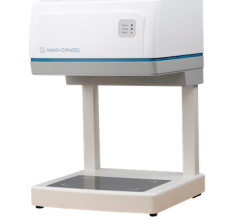Kate’s Words of Wisdom
As I was writing this month’s column, I ran across a quote attributed to Catherine the Great, who said, “I praise loudly, I blame softly.” Coincidentally, the words echoed a topic I planned to discuss, inspired by a program on radiation safety I attended during the recent annual meeting of the American Association of Physicists in Medicine – namely, that one way to reduce medical radiation errors in imaging facilities is to adopt a culture encouraging personnel to report mistakes without fingerpointing.
Another apt phrase to express this message is, “No blame, no shame” — the words used by William R. Hendee, Ph.D., a professor at the Medical College of Wisconsin and Marquette University, who led the AAPM program I attended. I am more accustomed to thinking about radiation safety from the systems side, where adjustments are made to equipment and software to achieve lower dose and improve safety. But Hendee and other speakers, like Brenda Clark, M.D., Ottawa Hospital Cancer Center in Ottawa, Ont., Canada, focused on the human side, which is the point I found interesting.
Clark noted that no matter how well someone is trained, human error is inevitable. When it happens, she said the key is to ask, “Why did this happen?” and take corrective action.
Such error management requires a workplace atmosphere in which people feel comfortable owning up to their mistakes. This can take concerted effort to achieve, especially when our culture fosters more of a “cover-your-butt,” “it’s not my problem” or “it was the other guy’s fault” mentality.
The need for such a culture also is recognized by Lawrence B. Marks, M.D., professor at the University of North Carolina. In an article that appeared earlier this year in PRO, the American Society for Radiation Oncology’s journal, he said, “Our field needs to better understand the frequency and causes of errors, especially those with the potential to do harm. We also need to incorporate basic human-factor principles that minimize risks into the design of our workspaces and services.”
As Marks alluded, minimizing human error should not be left to chance. It is something that can be improved by establishing rules or protocols that create favorable conditions for minimizing the possibilities for mistakes.
”Safety is a management concern,” Clark said in her program. Commitment from leaders is critical to the success of such efforts, she added.
Clark and Hendee were speaking about radiation safety from a radiotherapy point of view. Interestingly, a newly released alert from the Joint Commission that focuses on safety in diagnostic radiation contains similar points. Among actions the Joint Commission recommends for facilities to reduce risks due to avoidable diagnostic radiation, is to promote a culture of safety.
There are numerous steps facilities can and should take to eliminate opportunities for mistakes as much as possible. But getting back to the words of the Russian empress — in the (hopefully) rare instances when human error does occur, whether or not that mistake happens again may depend greatly on whether or not that human being feels comfortable coming forward to help fix whatever needs fixing, then and there. If there is a “blame softly” culture, it should help.



 December 10, 2025
December 10, 2025 









